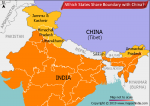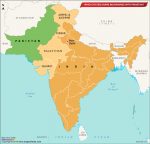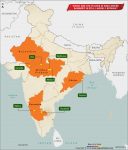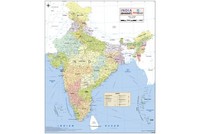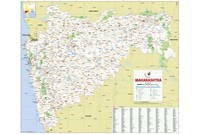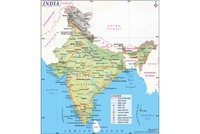One of India's most prominent social and religious reformers, Keshub Chandra Sen sought to modernize Indian culture and religion through the Brahmo Samaj. He played a crucial role in merging spiritual, social, and political reforms, influencing how Indians approached caste, gender, and religion. A visionary committed to social justice, education, and a more open interpretation of religion, Sen was truly an inspiring figure.
Sen's legacy is complex, marked by numerous contributions. As a multifaceted individual, he sparked discussions on social change, religious tolerance, and the interplay of Western rationality with Eastern mysticism. This article will explore his biography, the activities of Brahmo Samaj, his progressive ideals, and his enduring impact on Indian philosophy.
Background
Keshub Chandra Sen was born on November 19, 1838, in Calcutta into a wealthy family. After losing his father, Peary Mohan, at the age of 10, he was raised by his uncle. In 1854, he became the secretary of the Asiatic Society, though he soon grew disenchanted with the monotonous nature of bank work. The first Indian secretary of the Asiatic Society, Ramkamal Sen (1783–1844), had previously published the first English-Bengali Dictionary in two volumes (1830, 1834).
Inspired by American Transcendentalism, particularly the works of Theodore Parker, Sen sought to integrate Christian ideals into Hinduism. He believed that Christian teachings could revitalize Hindu culture and adopted practices from Christian missions.
Role in Brahmo Samaj
In 1857, Sen met Debendranath Tagore, the leader of the Brahmo Samaj, and became intrigued by its monotheistic tenets. By 1858, he had emerged as a key figure within the movement, renowned for his eloquence and organizational skills. Over the next decade, he established about 31 Brahmo Samaj groups across India, revitalizing the movement with fresh ideas and initiatives.
In 1859, he founded the Brahmo School, attracting eager young learners. He initiated the Sangat Sabha in 1860 to foster spiritual interaction among members and began publishing influential writings, including "Young Bengal, This is for You," which became a rallying cry for the movement. Starting in 1861, he launched The Indian Mirror, a Brahmo Samaj publication advocating for non-sectarian, universal religious concepts.
As Acharya (Preceptor) from 1862, Sen worked tirelessly to reform Hindu traditions, advocating against practices such as the caste system, child marriage, and adultery. He championed the marriage of widows and inter-caste unions, leading to notable events such as the first Brahmo widow's marriage to a man from a different caste during his tenure.
Ideology
Sen's ideas evolved throughout his life, shifting focus between faith and social issues. In his later years, he embraced a more personalized version of spirituality, attracting many followers to his interpretation of New Vaishnavism. Despite causing several splits within the Brahmo Samaj, he remained a prominent and admired social activist during British rule, significantly influencing India's social and religious landscape.
Marriage Controversy
In 1878, Sen's decision to marry off his youngest daughter, Suniti, to the Maharaja of Cooch Behar sparked considerable controversy. Critics argued that the marriage violated the Native (Brahma) Marriage Act of 1872, which Sen had helped establish. The wedding incorporated traditional Hindu elements, leading to widespread dissent within the community.
This controversy fueled divisions, culminating in the formation of the Samadarshi (liberal) group in 1874 and the Samadarshi Sabha in 1877, which advocated for constitutional rights. In response to the backlash, Sen insisted that his daughter's marriage was "providential," a stance that ultimately contributed to the emergence of the Sadharan Brahma Samaj on May 15, 1875.
International Influence
Sen's influence extended beyond India; few Indian reformers engaged with global intellectual currents as actively as he did. He eloquently critiqued the negative impacts of Western ideologies on Indian society in numerous lectures across Britain. His belief in universalism—that all religions share fundamental truths—was reflected in his outreach efforts.
Sen's vision of uniting all religions and transcending divisions played a vital role in his advocacy for an inclusive society. His dialogues with Western religious leaders enhanced East-West communication and resonated with audiences on both sides.
Legacy
Keshub Chandra Sen passed away at the age of 45 on January 8, 1884, but his impact on India endures. His reforms paved the way for subsequent movements advocating social justice, gender equality, and religious tolerance. His dream of an inclusive India inspired figures like Mahatma Gandhi and countless social activists.
Sen's life and work anticipated the challenges and opportunities that would confront India in the 20th and 21st centuries. His advocacy for women's rights, caste equality, and religious harmony remains relevant today.

